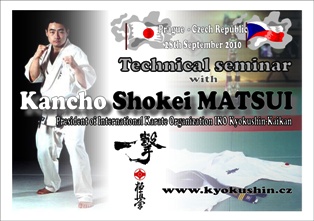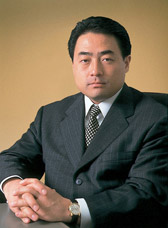Nepal is a small, landlocked Himalayan country located between the Tibetan autonomous region of the people’s republic of China in the north and India in the west south and east. The lands extend approximately 885 km from east to west and 193 km from North to South. Within these borders lie 8 of the world’s highest mountains and undoubtedly one of the best trekking areas and mountain expeditions in the world. Nepal serves the interest of all categories of tourist ranging from leisure vacationers, adventure lovers, researchers and honeymooners.
Glimpses of Nepal
Location : Situated between India and Tibet, an autonomous region of the People’s Republic of China.
Area : 1,47,181 sq.kmLatitude : 260’ and 30027’ North.
Longitude : 8004’ and 88012’ East.
Capital : Kathmandu
People : 100 ethnic groups and over 125 spoken languages.
Population : 25 million.
Topograph : The world’s deepest gorge ‘Kali-Gandaki’ to highest point on earth ‘The Everest’.
Vegetation : Nepal possesses wide range of vegetation due to its unique Topographical variation
Weather : Climate ranges from Tropical in the low lands to Alpine in higher attitudes.
Seasons:Winter (December-February), Summer (March-May), Monsoon(June-August), Autumn(September-November)
National Flower : Red Rhododendron
World Heritage Sites (Culture)

2. Pashupatinath.
3. Swayambhunath
4. Bouddhanth.
5. Changunarayan
6. Patan Durbar Square.
7. Bhaktapur Durbar Square
8. Lumbini (birthplace of Lord Gautam Buddha) World Heritage Sites (Natural) 9.Sagarmatha National Park (1,148 sq.kms.)
10.Royal Chitwan National Park (932 sq.km.)
People
 Nepal has a composite population stemming from various racial and ethnic communities. It has been a melting pot of diverse linguistic and ethnic groups with population 25 million living in different regions, wearing different costumes and speaking different languages and dialects. The people belong to multi-ethnic groups, ranging from the Indo-Aryan to Mongoloid. The Himalayan and central hilly regions are mostly inhabited by the people of the Tibeto-Burman strand while the people inhabiting the Terai lowlands may be grouped under the Indo-Aryan category.
Nepal has a composite population stemming from various racial and ethnic communities. It has been a melting pot of diverse linguistic and ethnic groups with population 25 million living in different regions, wearing different costumes and speaking different languages and dialects. The people belong to multi-ethnic groups, ranging from the Indo-Aryan to Mongoloid. The Himalayan and central hilly regions are mostly inhabited by the people of the Tibeto-Burman strand while the people inhabiting the Terai lowlands may be grouped under the Indo-Aryan category. Religion
 Hinduism and Buddhism constitute two major religions in Nepal. A remarkable feature of Nepal is the religious homogeneity what exists, particularly between the Hindu and Buddhist communities. Apart from the Hindus and Buddhists, Muslim forms the third largest religious group.
Hinduism and Buddhism constitute two major religions in Nepal. A remarkable feature of Nepal is the religious homogeneity what exists, particularly between the Hindu and Buddhist communities. Apart from the Hindus and Buddhists, Muslim forms the third largest religious group. History
 Nepal has a long glorious history. Its civilization can be traced back to thousand of years before the birth of Christ. For centuries, the kingdom of Nepal was divided into many principalities (Chaubise States). Kirantas ruled in the east, the Newars in the Kathmandu Valley, while Gurungs and Magars had their domain the mid-west. The Kirantas were said to have ruled their territories from 300 B.C. The country took its present shape only after 1768 A.D. when Prithvi Narayan Shah, King of Gorkha, conquered and united all the tiny states into one kingdom.
Nepal has a long glorious history. Its civilization can be traced back to thousand of years before the birth of Christ. For centuries, the kingdom of Nepal was divided into many principalities (Chaubise States). Kirantas ruled in the east, the Newars in the Kathmandu Valley, while Gurungs and Magars had their domain the mid-west. The Kirantas were said to have ruled their territories from 300 B.C. The country took its present shape only after 1768 A.D. when Prithvi Narayan Shah, King of Gorkha, conquered and united all the tiny states into one kingdom. Art and Culture
 There is perhaps no country in the world except Nepal where traditional architecture, painting and sculpture have been well preserved for 1500 years. The exquisite medieval art and architecture of the Kathmandu valley vividly reflect the artistic ingenuity and the religious tradition of the people. To better understand the deep and complex roots of Nepalese culture, it is necessary to visit the monuments and religious shrines.
There is perhaps no country in the world except Nepal where traditional architecture, painting and sculpture have been well preserved for 1500 years. The exquisite medieval art and architecture of the Kathmandu valley vividly reflect the artistic ingenuity and the religious tradition of the people. To better understand the deep and complex roots of Nepalese culture, it is necessary to visit the monuments and religious shrines.





























